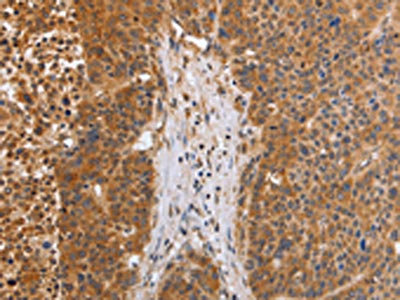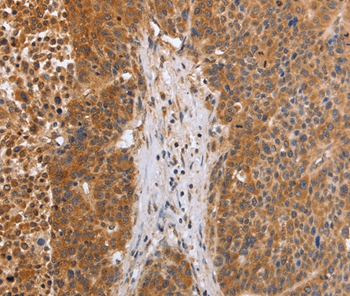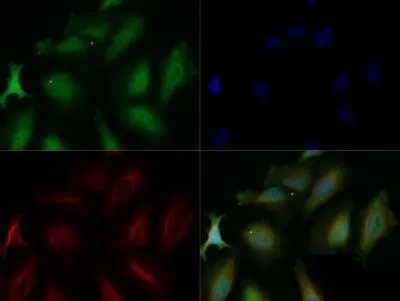
The image on the left is immunohistochemistry of paraffin-embedded Human liver cancer tissue using CSB-PA040512(EGLN3 Antibody) at dilution 1/30, on the right is treated with fusion protein. (Original magnification: x200)
EGLN3 Antibody
CSB-PA040512
ApplicationsELISA, ImmunoHistoChemistry
Product group Antibodies
ReactivityHuman, Mouse, Rat
TargetEGLN3
Overview
- SupplierCusabio
- Product NameEGLN3 Antibody
- Delivery Days Customer20
- ApplicationsELISA, ImmunoHistoChemistry
- CertificationResearch Use Only
- ClonalityPolyclonal
- ConjugateUnconjugated
- Gene ID112399
- Target nameEGLN3
- Target descriptionegl-9 family hypoxia inducible factor 3
- Target synonymsHIFP4H3; HIFPH3; HIF-PH3; HIF-prolyl hydroxylase 3; HPH-1; HPH-3; hypoxia-inducible factor prolyl hydroxylase 3; PHD3; prolyl hydroxylase domain-containing protein 3; prolyl hydroxylase EGLN3
- HostRabbit
- IsotypeIgG
- Protein IDQ9H6Z9
- Protein NameEgl nine homolog 3
- Scientific DescriptionCellular oxygen sensor that catalyzes, under normoxic conditions, the post-translational formation of 4-hydroxyproline in hypoxia-inducible factor (HIF) alpha proteins. Hydroxylates a specific proline found in each of the oxygen-dependent degradation (ODD) domains (N-terminal, NODD, and C-terminal, CODD) of HIF1A. Also hydroxylates HIF2A. Has a preference for the CODD site for both HIF1A and HIF2A. Hydroxylation on the NODD site by EGLN3 appears to require prior hydroxylation on the CODD site. Hydroxylated HIFs are then targeted for proteasomal degradation via the von Hippel-Lindau ubiquitination complex. Under hypoxic conditions, the hydroxylation reaction is attenuated allowing HIFs to escape degradation resulting in their translocation to the nucleus, heterodimerization with HIF1B, and increased expression of hypoxy-inducible genes. EGLN3 is the most important isozyme in limiting physiological activation of HIFs (particularly HIF2A) in hypoxia. Also hydroxylates PKM in hypoxia, limiting glycolysis. Under normoxia, hydroxylates and regulates the stability of ADRB2. Regulator of cardiomyocyte and neuronal apoptosis. In cardiomyocytes, inhibits the anti-apoptotic effect of BCL2 by disrupting the BAX-BCL2 complex.
- ReactivityHuman, Mouse, Rat
- Storage Instruction-20°C or -80°C
- UNSPSC41116161







